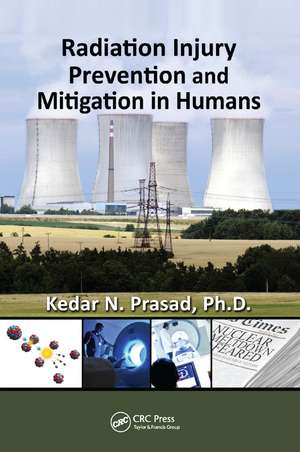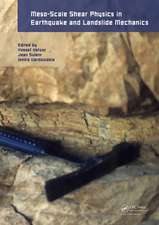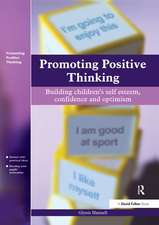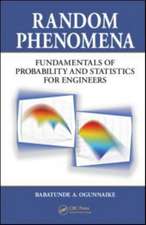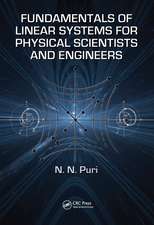Radiation Injury Prevention and Mitigation in Humans
Autor Kedar Prasaden Limba Engleză Paperback – 18 sep 2018
Radiation Injury Prevention and Mitigation in Humans identifies and examines physical protection strategies as well as non-toxic, cost-effective biological protection strategies. This includes agents that—when administered orally before and/or after irradiation exposures—could be effective in preventing and mitigating acute radiation damage. The book discusses implementing physical and biological protection strategies particularly for first responders, radiation workers, astronauts, and civilians who might be exposed to higher doses of radiation in the course of their activities. The book describes:
- Physics of ionizing radiation and radiological weapons, principles of nuclear reactors, the types of radiological weapons, and consequences of their explosions
- Acute and late health effects of high and low doses of radiation
- The efficacy of FDA-approved and unapproved radioprotective and radiation mitigating agents
- The efficacy of radioprotective and radiation mitigating agents not requiring FDA approval (antioxidants and herbs)
- Scientific data and rationale in support of using micronutrient preparations containing dietary and endogenous antioxidants for preventing acute radiation sickness and for mitigating the late adverse health effects among survivors of high and low doses of radiation
Preț: 352.95 lei
Preț vechi: 477.21 lei
-26% Nou
Puncte Express: 529
Preț estimativ în valută:
67.55€ • 70.26$ • 55.76£
67.55€ • 70.26$ • 55.76£
Carte tipărită la comandă
Livrare economică 12-26 aprilie
Preluare comenzi: 021 569.72.76
Specificații
ISBN-13: 9781138374607
ISBN-10: 1138374601
Pagini: 304
Ilustrații: 14
Dimensiuni: 156 x 234 mm
Greutate: 0.45 kg
Ediția:1
Editura: Taylor & Francis
Colecția CRC Press
Locul publicării:Oxford, United Kingdom
ISBN-10: 1138374601
Pagini: 304
Ilustrații: 14
Dimensiuni: 156 x 234 mm
Greutate: 0.45 kg
Ediția:1
Editura: Taylor & Francis
Colecția CRC Press
Locul publicării:Oxford, United Kingdom
Public țintă
Academic and Professional Practice & DevelopmentCuprins
Physics of Nuclear Bombs and Nuclear Reactors. Acute Damage by Irradiation with High Doses of Ionizing Radiation in Humans. Long-Term Damages among Survivors of High Doses of Ionizing Radiation. Prevention and Mitigation of Acute Damage Produced by High Doses of Ionizing Radiation. Prevention and Mitigation of Long-Term Damages among Survivors of High Doses of Ionizing Radiation. Health Risks of Low Doses of Ionizing Radiation (Diagnostic Radiation. Prevention and Mitigation of Damages after Low Doses of Ionizing Radiation. Health Risks of Non-Ionizing Radiation (UV Light and Electromagnetic Radiation). Prevention and Mitigation of Damages after Exposure to Non-Ionizing Radiation. Implementation Plan for Non-Toxic and Cost-Effective Radioprotective and Radiomitigating Agents.
Notă biografică
Dr. Kedar N. Prasad obtained a master’s degree in zoology from the University of Bihar, Ranchi, India, and a PhD in radiation biology from the University of Iowa, Iowa City, in 1963. He received postdoctoral training at the Brookhaven National Laboratory, Long Island, New York, and joined the Department of Radiology at the University of Colorado Health Sciences Center, where he became a professor and director for the Center for Vitamins and Cancer Research.
Dr. Prasad has published over 200 articles in peer-reviewed journals, and authored and edited 15 books in the areas of radiation biology, nutrition and cancer, and nutrition and neurological diseases, particularly Alzheimer’s disease and Parkinson’s disease. These articles were published in highly prestigious journals such as Science, Nature, and Proceedings of the National Academy of Sciences in the United States. Dr. Prasad has received many honors, including an invitation by the Nobel Prize Committee to nominate a candidate for the Nobel Prize in Medicine for 1982; the 1999 Harold Harper Lecture at the meeting of the American College of Advancement in Medicine; and an award for the best review of 1998–1999 on antioxidants and cancer and 1999–2000 on antioxidants and Parkinson’s disease by the American College of Nutrition.
Dr. Prasad is a Fellow of the American College of Nutrition and served as president of the International Society of Nutrition and Cancer, 1992–2000. He belongs to several professional societies, such as the American Association for Cancer Research and the Radiation Research Society. Currently, he is chief scientific officer of the Premier Micronutrient Corporation.
Dr. Prasad has published over 200 articles in peer-reviewed journals, and authored and edited 15 books in the areas of radiation biology, nutrition and cancer, and nutrition and neurological diseases, particularly Alzheimer’s disease and Parkinson’s disease. These articles were published in highly prestigious journals such as Science, Nature, and Proceedings of the National Academy of Sciences in the United States. Dr. Prasad has received many honors, including an invitation by the Nobel Prize Committee to nominate a candidate for the Nobel Prize in Medicine for 1982; the 1999 Harold Harper Lecture at the meeting of the American College of Advancement in Medicine; and an award for the best review of 1998–1999 on antioxidants and cancer and 1999–2000 on antioxidants and Parkinson’s disease by the American College of Nutrition.
Dr. Prasad is a Fellow of the American College of Nutrition and served as president of the International Society of Nutrition and Cancer, 1992–2000. He belongs to several professional societies, such as the American Association for Cancer Research and the Radiation Research Society. Currently, he is chief scientific officer of the Premier Micronutrient Corporation.
Descriere
Nuclear bomb explosions by terrorists as well as unintentional nuclear disasters remain possibilities as long as nations around the world have nuclear arsenals. At present, there are no strategies to provide biological protection before and/or after radiation exposure. This book identifies and examines nontoxic and cost-effective agents that could be effective in preventing and mitigating acute radiation damage before and after exposure. The text discusses physical and biological protection strategies for first responders at risk. It covers the full range of potential sources of radiation and includes an up-to-date list of helpful resources.
